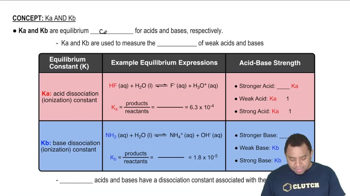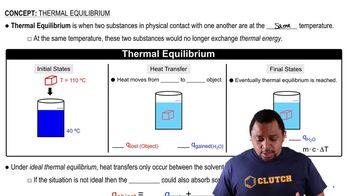Here are the essential concepts you must grasp in order to answer the question correctly.
pH and pKa
pH is a measure of the hydrogen ion concentration in a solution, calculated as pH = -log[H+]. For weak acids, the pKa is related to the strength of the acid, with lower pKa values indicating stronger acids. The relationship between pH and pKa is crucial for understanding acid dissociation and calculating the acid ionization constant (Ka).
Recommended video:
Acid Ionization Constant (Ka)
The acid ionization constant (Ka) quantifies the strength of a weak acid in solution. It is defined by the equilibrium expression: Ka = [H+][A-]/[HA], where [H+] is the concentration of hydrogen ions, [A-] is the concentration of the conjugate base, and [HA] is the concentration of the undissociated acid. A higher Ka value indicates a stronger acid.
Recommended video:
Characteristics of Ka and Kb
Equilibrium Concentrations
In a weak acid solution, the equilibrium concentrations of the species involved must be determined to calculate Ka. For a weak acid HA dissociating into H+ and A-, the initial concentration, the change in concentration due to dissociation, and the equilibrium concentrations are essential for applying the Ka expression. Understanding how to set up these concentrations is key to solving the problem.
Recommended video:
 Verified step by step guidance
Verified step by step guidance

